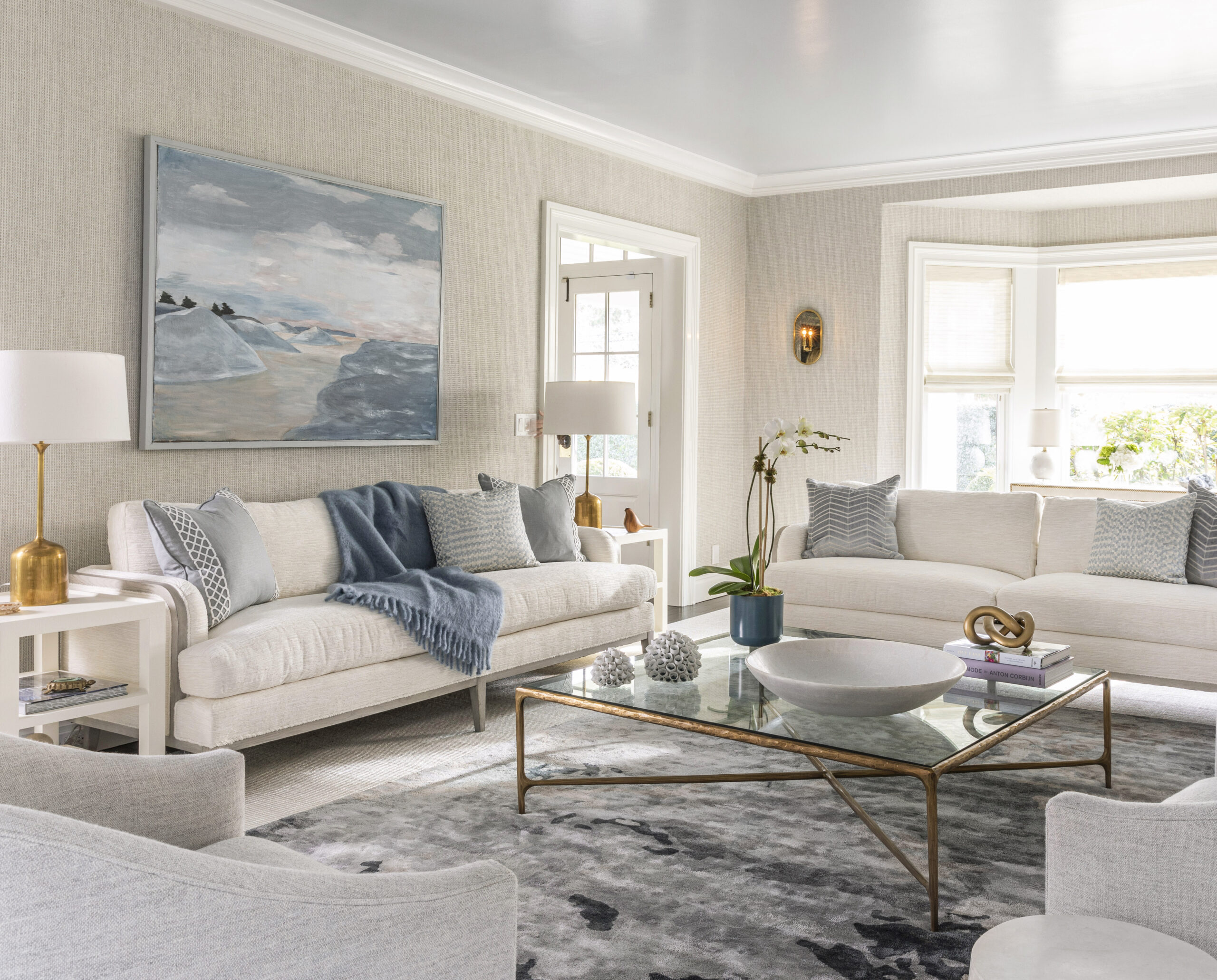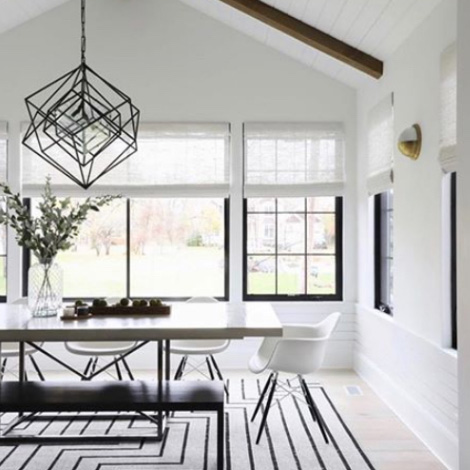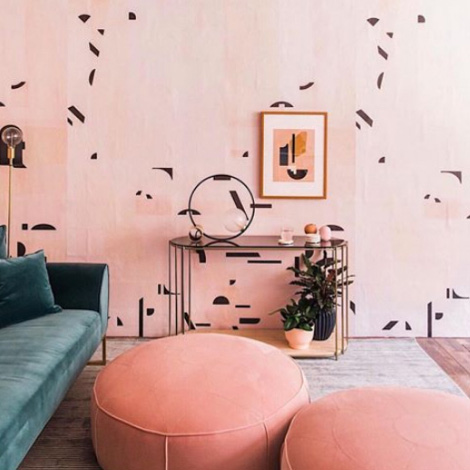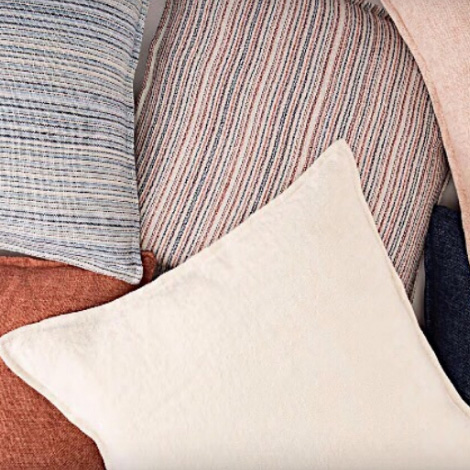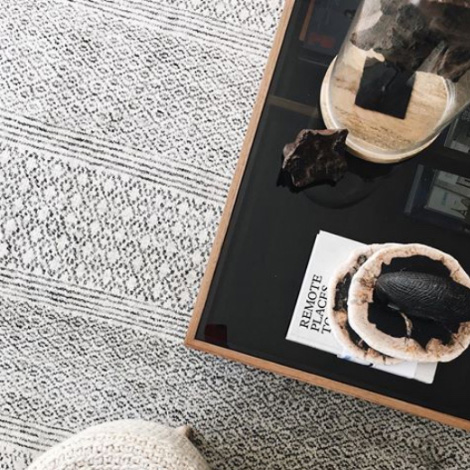Home decor is all about the mix—classically traditional with modern pizzazz, strategically tailored with perfectly imperfect, and timeless centerpieces with of-the-moment accents. But when is the right time to encourage clients to invest in furnishings and home decor that will last for generations? To get the answers, Jaipur Living asked the pros. Here, interior designers Austin Handler and Jennifer Mabley of Mabley Handler Interior Design, Lori Paranjape of Mrs. Paranjape Design + Interiors, and Lisa Mende of Lisa Mende Design divulge their expert advice.
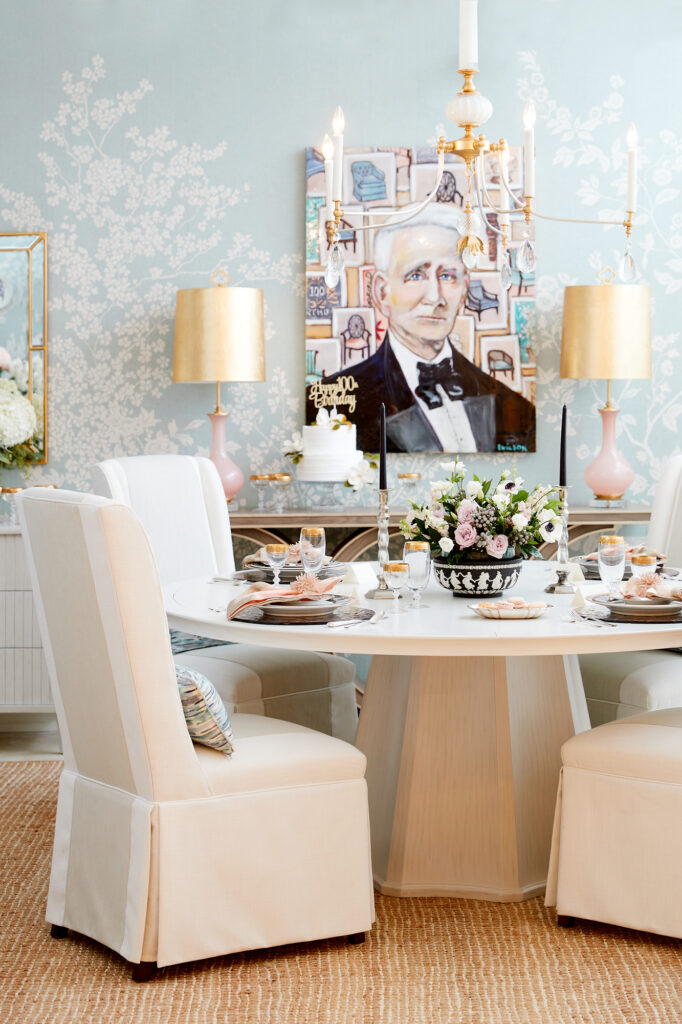
Interior designer Lisa Mende filled this showroom with Jaipur Living’s Naturals Lucia. Photography by Stacey Van Berkel Photography
Mood Board
Step one in any interiors project: Interpret the client’s vision. “Our role is to truly understand the client’s needs, then create an environment that rises up to meet them,” says Lori Paranjape, the founder and creative mind behind Mrs. Paranjape Design + Interiors. Key to the crucial planning phase is deciding where and how to allocate the budget. “As a team,” says Mabley Handler Interior Design co-founder Jennifer Mabley, “we spend a good deal of time with our clients to get a feel for not only what they want their spaces to feel like, but also how they live in their homes. Are we creating a weekend getaway? Is this a home a family will live in as a primary residence? Do they have children or even grandchildren? Do they entertain or tend to stay in more? When you take this information and line it up with functional things like room count and square footage, the project starts to give voice to its style and spirit.”
See also: 9 Designer Favorite Artisan-Made Rugs
Among other central furnishings like seating and upholstery, rugs are often flagged as design stars in a new space. “Rugs can be both the foundation and the finishing touch,” says Lisa Mende, founder of eponymous firm Lisa Mende Design. “Many rugs are like art for the floor, so if you choose a patterned rug, the furnishings must bow to the rug. If you choose to have the rug neutral, it serves to ground the room and provide an outline for placing furnishings.”
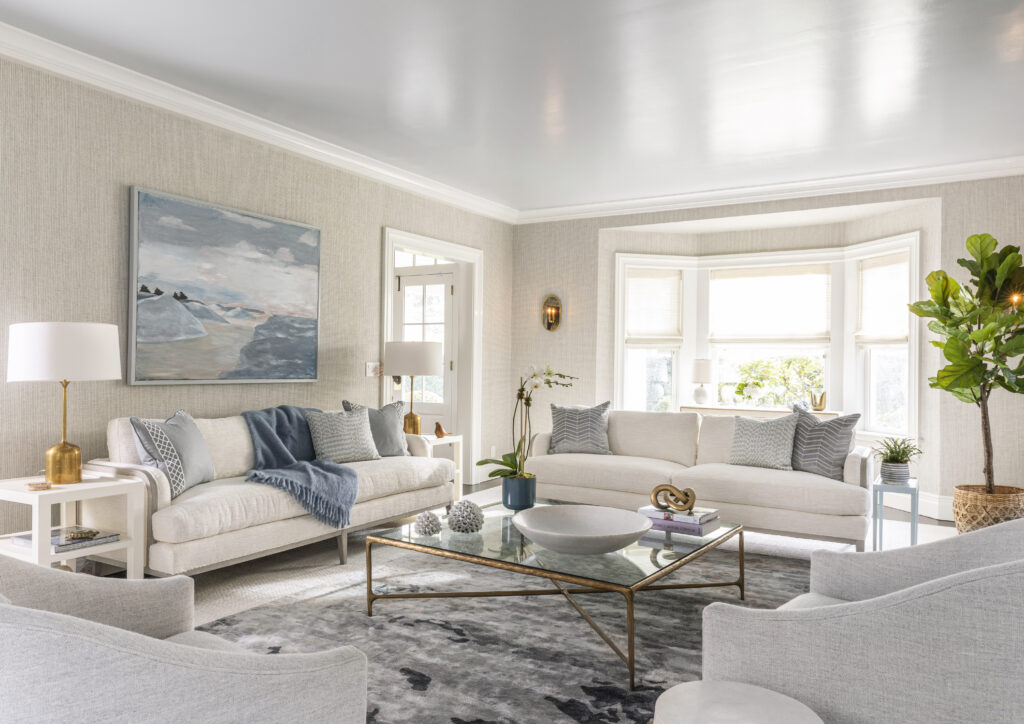
The Transcend collection has pride of place in this room designed by Austin Handler and Jennifer Mabley. Photography courtesy of Mabley Handler Interior Design
Timeless Appeal
Yet the question of when to invest in a sumptuous hand-knotted rug or select a more budget-friendly construction remains. The answer, according to our interior experts, is found in the client’s lifestyle and individual needs. Are there young children and pets running about? Lean to power-loom styles that are more easily replaced when they’ve fulfilled their five- to seven-year lifespan. Is the space the center of the home and prone to high foot traffic? Consider an indoor/outdoor rug for its ease of cleaning. Are you furnishing a primary bedroom? Look to higher-end rugs like hand-knots that can become family heirlooms for generations to come.
“Rugs can—quite literally—serve as the foundation for a space. On one level, they have the ability to create a room’s color palette, but on a higher level, they play a crucial role in determining the spirit of the room. Having the right rug at the beginning is vital.”
—Jennifer Mabley, co-founder of Mabley Handler Interior Design
“Heritage or heirloom decor are items that are made with exceptional quality and are versatile enough to work in more than one environment,” explains Paranjape. “For instance: a large-scale hand-knotted rug can be the perfect foundation for a very traditional room or can transition into a very modern space. Timeless design pieces are a valuable investment!” Beyond the floor, Mabley adds, “heritage decor is anything the homeowner comes to us with and says, ‘This has meaning to us, so we need to use it.’ It can be anything from a chair their grandparents had to a chandelier we fell in love with at a Paris flea market. We work to take these pieces and weave them into interiors and create a cohesive and creative mix.”
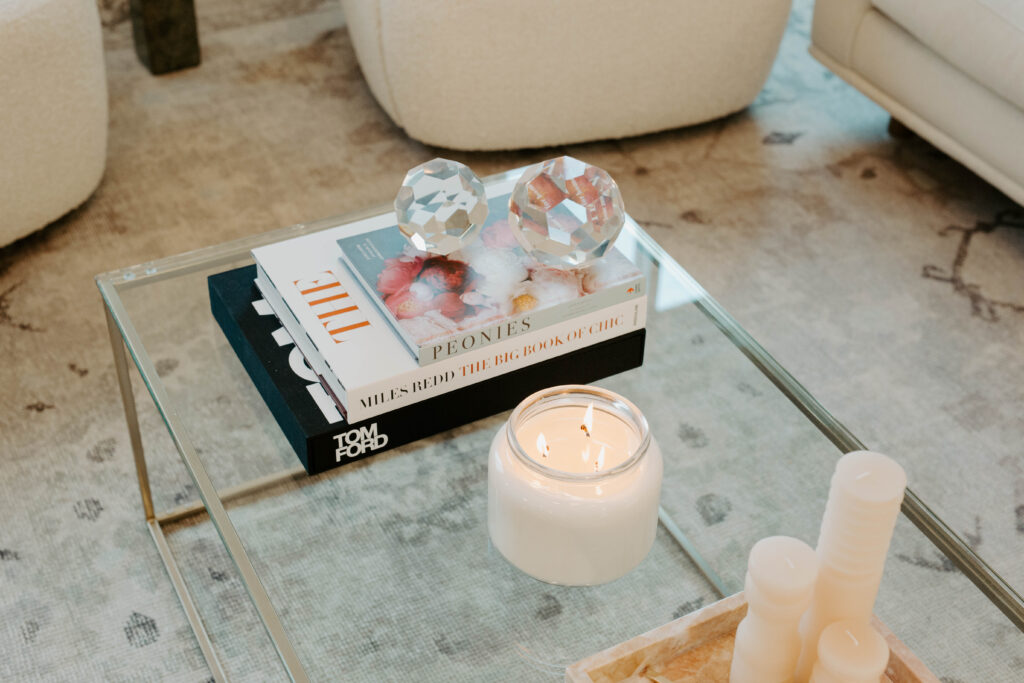
The best-selling Kai rug from Jaipur Living peeks through this Lori Paranjape-styled vignette. Photography courtesy of Mrs. Paranjape Design + Interiors
Practicality First
Keeping pragmatism in mind, it’s an interior designer’s guiding force to push the status quo on decor decisions, making for a wonderfully memorable end result. “As a rule, we like to work with clients in placing bespoke and heirloom-quality pieces in a home’s feature rooms (living rooms, dining rooms, etc.),” says Mabley. “Secondary spaces—meaning rooms that might be used less—are great opportunities to balance budgets and use more accessible pieces.” While the Mabley Handler team uses home accessories at a more accessible price point as a chance to play with trend-forward design ideas, Paranjape suggests investment-quality pieces at every turn. “Sometimes clients ask for budget-friendly pieces in high-traffic areas,” she says, “but in my opinion, those are the areas where investment pieces work best. For example, wool rugs are amazing for busy staircases and hallways because they are so durable and cleanable.”
See also: 3 Design Pros Reveal Their Most-Asked Client Questions
Adds Mende, “I always tell my residential clients to buy the best they can afford. What is the old adage? ‘Buy the best you can buy first and you only cry once?’ I believe that’s true. That being said,” she continues, “you want to make sure you ‘love’ a quality investment and aren’t buying for a trendy room. Jaipur Living offers beautiful heirloom rugs that are classic in coloration, which is what I look for in a heritage piece. Yet, if I am working with a younger client with kids, we often opt for a rug that can be a workhorse in a room and save the bespoke pieces for a little later down the road when the kids are older. However, a truly well-made handmade rug can also be a work horse if the colors aren’t too light.”

A quiet corner from Lisa Mende features Naturals Lucia. Photography by Stacey Van Berkel Photography
In The Mix
Mixing high and low pieces continues to dominate the interiors design scene. “I like using high-low design because it allows the budget to go further when there is a tight budget,” notes Mende. “The trick is in knowing where to go high and where to go low so your room is perfectly balanced both visually and functionally.”
While the high-low trend speaks literally to budget, it also nods to vintage decor mixed with new, more modern pieces. “In the past few years, we’ve been working more with clients and creating curated art collections that genuinely speak to who they are and what they like,” says Mabley. “Maybe it’s an eclectic collection of vintage pictures from across a client’s family tree, a sleek black-and-white photo series we found in a Tribeca gallery or works from an up-and-coming local artist. There are so many options across so many price points, and the result is always incredibly personal and unique.”
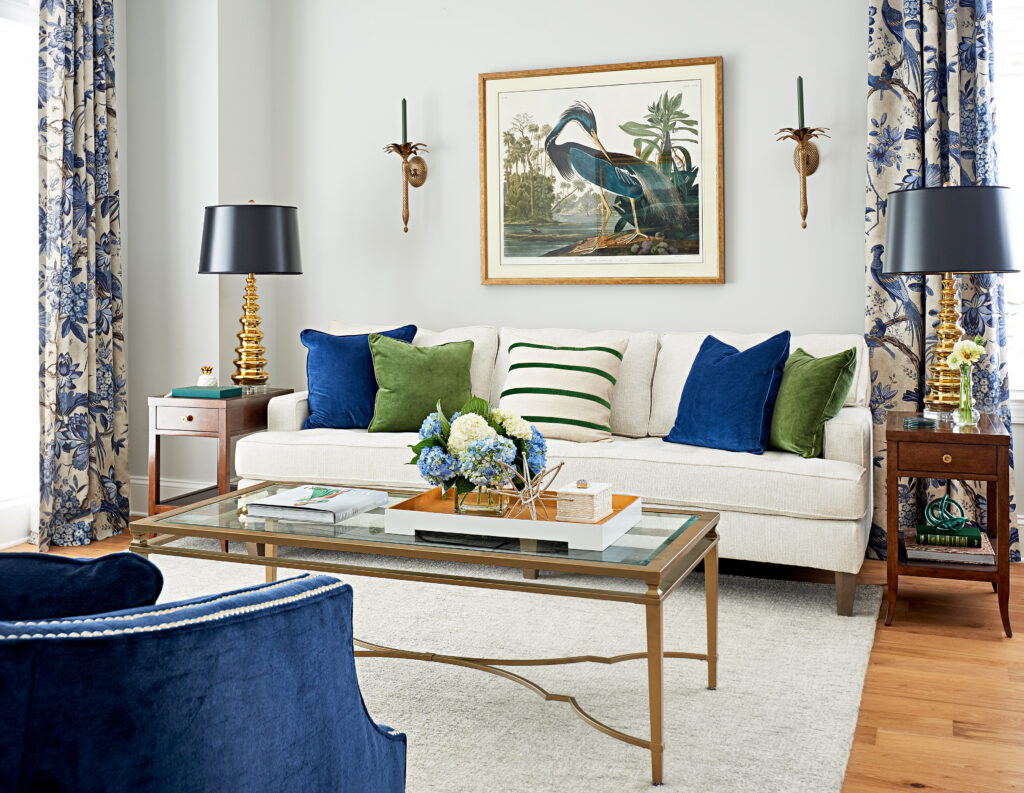
A flora- and fauna-filled living room courtesy of Lisa Mende showcases the Cambridge collection. Photography by Dustin Peck Photography
Next story

